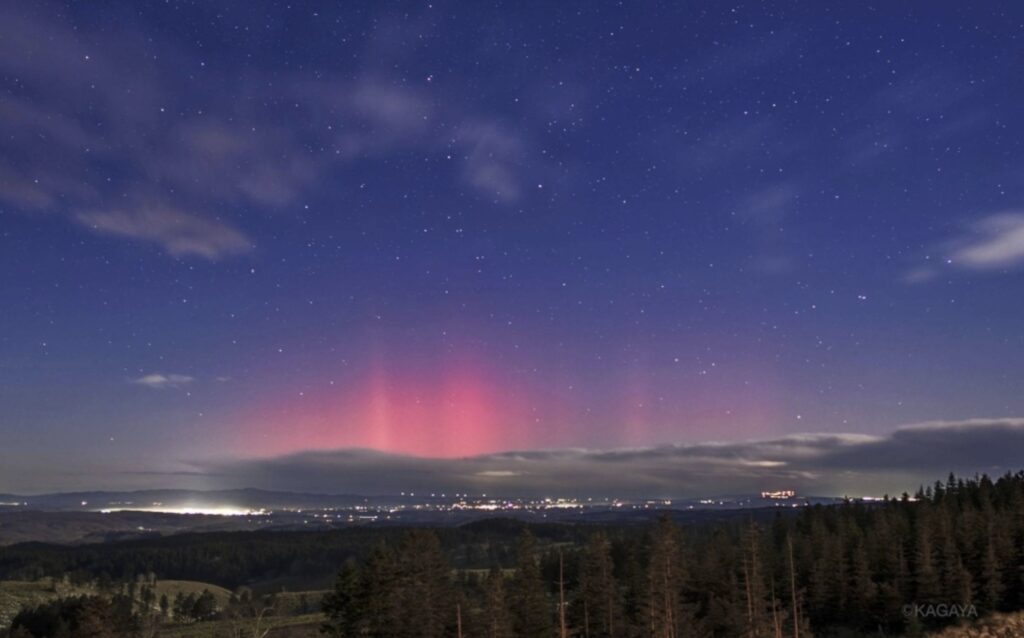Aurora Borealis or Northern Lights are true wonders of nature. The dancing green lights above-snow-blanketed landscapes feel mesmerizing and otherworldly to behold.
For Filipinos, this means traveling almost halfway across the world as they are only commonly observed in countries such as Iceland, northern parts of Sweden, Finland, Norway, Russia, Canada, Alaska, and Greenland.
Until this year, when it happened a little closer to us.
A red aurora was observed in Japan above the island of Hokkaido, the largest island in the country, on Friday, December 1. This is the first sighting of auroras in Japan since the last time in October 2003.
Reports from an observatory in the town of Rikubetsu in Hokkaido state the auroras began to become visible around 8:20 PM local time.

“I didn’t think I could see the red lights so clearly with the naked eye,” said one of the observatory’s staff, Takuya Murata. “It’s very moving.”
Furthermore, the observatory stated that chances of seeing the northern lights again are possible due to solar activity becoming more frequent until 2025.
Auroras are produced when charged solar particles collide with highly concentrated gas molecules in Earth’s atmosphere such as nitrogen, oxygen, argon, and carbon dioxide. The atmospheric composition and altitude results in varying colors of green, pink, red, blue, purple, and yellow.
Compared to green auroras, red hues are less frequent as they occur when solar particles hit oxygen molecules at altitudes of 300 to 400 kilometers.
The aforementioned local observatory also said the auroras seen on Friday were a result of massive explosions on the sun’s surface about 2 days earlier.
According to National Geographic, the best seats on earth to observe the celestial show are locations above the magnetic latitude 55°. The Auroras are also better observed on dark nights when there is low light pollution during equinoxes, especially autumnal equinox in September for pleasant temperatures in polar latitudes.
Meanwhile, the southern hemisphere also has the dancing lights called Aurora Australis which are less heard due to the limited locations where they can be observed, which are at the southern tips of Tasmania and New Zealand.
Other POP! stories that you might like:
Rare ‘Red Aurora’ surprises and amazes Mongolians
Filipino anime fans cheer the Philippine locations that appeared in latest ‘Detective Conan’ movie
Research institute in Japan releases trading cards of Japanese science ‘heroes’
Plans in progress to transform Japan’s ‘ghost houses’ into tourist lodgings
Golden mole species thought to be extinct rediscovered in South Africa after 86 Years
Judge allows 9,000 women to sue Disney over alleged gender-based pay disparity

